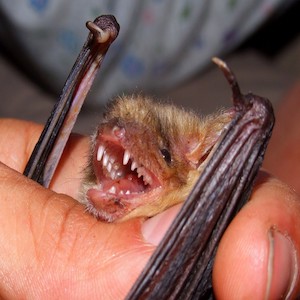Bats of Sicily: historical evidence, current knowledge, research biases and trends

All claims expressed in this article are solely those of the authors and do not necessarily represent those of their affiliated organizations, or those of the publisher, the editors and the reviewers. Any product that may be evaluated in this article or claim that may be made by its manufacturer is not guaranteed or endorsed by the publisher.
Authors
Insular bat communities are a preeminent conservation taxon due to their ecological role and intriguing and unique species composition. Sicily is the largest island in the Mediterranean. However, research on Sicilian bats is still scattered, with substantial information being overlooked. Here we present a systematic review of all available bibliographic information from 1810 to 2022, including grey literature, archives, and peer-reviewed publications. The analyses of bibliographic sources permitted us to evaluate the status of research on bats using the Bat Research Efficiency (BRE) and Species-Research Effort Allocation (SREA) metrics. A total of 81 documents were obtained. Since 1955, an average of 1.2 contributions have been issued per year. Over half of the documents are in Italian. The studies are primarily conducted in north-western (40%) and south-eastern (28%) Sicily, mainly in the provinces of Palermo and Siracusa. Most of the contributions concern “Species records” (61%) and “Ecology” (21%). There were 28 species reported, but a significant bias exists towards Myotis myotis, Miniopterus schreibersii, Rhinolophus ferrumequinum, Myotis capaccinii, and Rhinolophus euryale. Around 31.5% of the studies focused on threatened species, while 68.5% concentrated on non-threatened species, with an overall preference for cave-dwelling species. Yet, SREA analysis demonstrates a lack of research efforts for all species. We encourage the use of a multidisciplinary approach towards under-studied species while covering geographical gaps and increasing public awareness of the functional role of bats in natural ecosystems.
Cover Image: credits Saxifraga - Rudmer Zwerver
How to Cite

This work is licensed under a Creative Commons Attribution-NonCommercial 4.0 International License.
PAGEPress has chosen to apply the Creative Commons Attribution NonCommercial 4.0 International License (CC BY-NC 4.0) to all manuscripts to be published.










